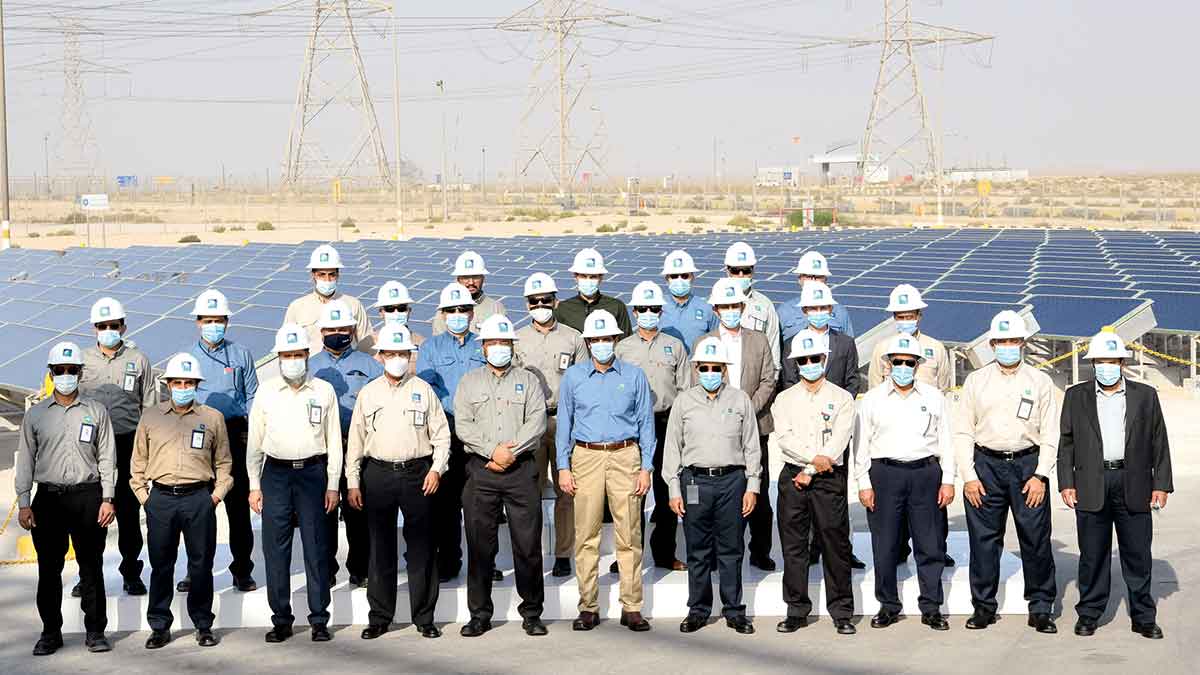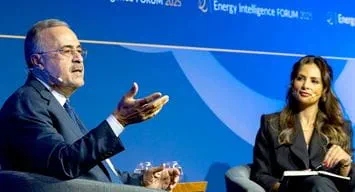Solar System
Aramco employs first industrial solar thermal system

Global January 10, 2022
Qurayyah Sea Water Plant introduces preheated feedwater into boilers.
Aramco has commissioned its first industrial solar thermal system at the Qurayyah Sea Water Plant (QSWP) operated by the Sea Water Injection Department (SWID).
The installation was a result of extensive collaboration between the Research and Development Center’s Carbon Management Team and SWID.
The system was commissioned in Feb. 2021. Since then, the performance data from the field has been validated against the original simulation model. After promising results, the system was recently inaugurated by senior vice president of Upstream, Nasir K. Al Naimi and Aramco’s chief technology officer, Ahmad O. Al-Khowaiter, and the executive leaders of both collaborating organizations.
Also present at the inauguration were Khaled A. Buraik, vice president of the Southern Area Oil Operations, along with other Upstream leadership.
The Qurayyah Solar Thermal System preheats feedwater to the boilers from 90 degrees Celsius to 160 degrees at high pressure, thereby reducing the consumption of diesel fuel for the full heating requirement, which may result in a reduction of greenhouse gases emissions. The current solar thermal system consists of 510 panels covering an area of 2,000 m2 and represents Phase I of the implementation plan.
The simulation model and field data point to a 10% reduction of annual diesel consumption. The success of this first phase deployment as proof of concept is expected to help expand utilization of solar thermal systems across the company.
While solar thermal systems have been available as a technology for some time, their integration into continuous operation processes does not seem to be fully validated in the industry.
Implementation at the QSWP, specifically, was due to several reasons. First, diesel consumption at the facility is on the low side at 6,000 gallons per week. Therefore, displacing a significant percentage by a solar thermal system is a realistic goal. Second, diesel is by far the most expensive fuel to generate thermal energy. Therefore, the solar thermal system is better positioned as an economically viable alternative. Third, the boiler system at the QSWP happened to be adjacent to a swath of land sufficient for the number of solar panels used.
Background of QSWP
The QSWP treats seawater in lieu of non-potable groundwater as an alternative water source for oil production, thereby preserving scarce groundwater. Since its establishment 40 years ago, SWID has enabled both wealth creation and preservation for the Kingdom, as abundant hydrocarbon resources are produced by SWID’s oil reservoir injection activities.
To treat the seawater used, Aramco built QSWP, the world’s largest seawater injection plant for reservoir pressure maintenance. SWID is responsible for the 24/7 treatment and injection of seawater in the peripherals of reservoirs, such as the giant Ghawar and Khurais fields, to maintain the pressure needed for oil and gas production in the area.
Caption: The inauguration team in front of the 2,000-m2 array of solar panels at the Qurayyah Sea Water Plant.



